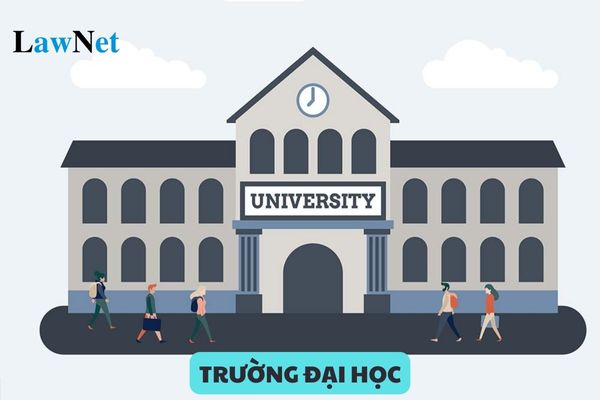What is the autonomy of universities in Vietnam?
What is the autonomy of universities in Vietnam?
Article 7 of the Higher Education Law 2012 as amended by Clause 4, Article 1 of the Higher Education Amendment Law 2018 provides as follows:
Higher Education Institutions
- Higher education institutions are legal entities, including universities, colleges, and other higher education institutions with names in accordance with the law.
National universities, regional universities are universities executing the national strategic missions, regional development tasks of the country.
- Types of higher education institutions include:
a) Public higher education institutions invested by the State, ensuring operational conditions and representing ownership;
b) Private higher education institutions invested by domestic or foreign investors, ensuring operational conditions.
A university is a type of higher education institution. Universities can be classified as either public universities or private universities.
According to Article 32 of the Higher Education Law 2012 as amended by Clause 17, Article 1 of the Higher Education Amendment Law 2018, the rights of autonomy for higher education institutions are regulated as follows:
Rights of Autonomy and Accountability of Higher Education Institutions
Higher education institutions exercise their rights of autonomy and accountability according to the law. Agencies, organizations, and individuals are responsible for respecting and ensuring the autonomy of higher education institutions.
Conditions for the exercise of the right of autonomy by higher education institutions are stipulated as follows:
a) The establishment of the university council, and university board has been completed; has been recognized as meeting the standards of higher education institutions by a legal education quality accreditation organization;
b) Issued and organized the implementation of organization and operational regulations; financial regulations; internal management regulations, processes, and procedures; and has quality assurance policies meeting state standards;
c) Devolved autonomy and accountability to each unit and individual within the higher education institution;
d) Publicize conditions ensuring quality, accreditation results, graduate employment rates, and other information as prescribed by law.
Academic and professional autonomy includes issuing and implementing standards, quality policies, opening of disciplines, enrollment, training, scientific and technological activities, domestic and international cooperation in accordance with the law.
Organizational and personnel autonomy includes issuing and implementing internal regulations on the organizational structure, labor structure, list, standards, and policies for each job position; recruitment, use, and dismissal of lecturers, public employees, and other workers; deciding on the management and administrative staff within the institution in compliance with legal regulations.
Financial and asset autonomy includes issuing and organizing the implementation of internal regulations on revenue sources, financial management and use, assets; attracting investment capital for development; tuition policies, scholarships for students, and other policies in accordance with the law.
...
Thus, universities have autonomy in areas such as academic and professional activities, organizational and personnel management, and financial and asset management.
The conditions for the exercise of autonomy by universities are as follows:
- Establishment of the university council, university board; recognized as meeting the standards of a higher education institution by a legal education quality accreditation organization;- Issued and organized the implementation of organization and operational regulations; financial regulations; internal management regulations, processes, and procedures; and has quality assurance policies meeting state standards;- Devolved autonomy and accountability to each unit and individual within the higher education institution;- Publicize conditions ensuring quality, accreditation results, graduate employment rates, and other information as prescribed by law.

What is the autonomy of universities in Vietnam? (Image from the Internet)
What are the current conditions for establishing a university in Vietnam as per current regulations?
According to Clause 1, Article 22 of the Higher Education Law 2012, some contents were abolished by Clause 2, Article 2 of the Higher Education Amendment Law 2018, amended by Clause 16, Article 1 of the Higher Education Amendment Law 2018, the conditions for establishing a university are as follows:
- There is a project establishment in accordance with the approved higher education network planning;- Approved in writing by the provincial People's Committee where the main campus of the higher education institution is located regarding the establishment and land use confirmation;- Financial capability for investment in building the higher education institution is confirmed by the competent authority;- Foreign-invested higher education institutions must meet other conditions as prescribed by the Investment Law 2020.
Must foreign-invested universities disclose resources and financial information in Vietnam?
According to Article 31 of the Higher Education Law 2012, the duties and powers of foreign-invested higher education institutions are specified as follows:
Duties and Powers of Foreign-Invested Higher Education Institutions
Develop and implement goals, programs, teaching content, scientific research; build a team of lecturers, facilities, equipment, textbooks, and teaching materials; ensure quality and conduct higher education quality accreditation; organize training activities and issue diplomas and certificates according to the law.
Organize and operate according to the establishment decision and the permit for educational activities.
3. Publicize commitments to training quality, resources, and financial information.
- Be subject to state management in education by the Ministry of Education and Training.
Periodically report on operational status and explain upon request by the Ministry of Education and Training, ministries and central authorities, competent authorities, and the provincial People's Committee where the foreign-invested higher education institution is based and operates.
...
Thus, foreign-invested universities must disclose their resources and financial information.

